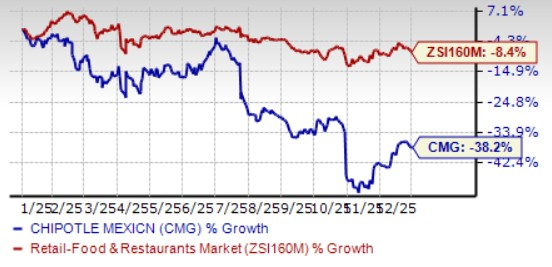The S&P 500’s Bull Market: What Investors Should Know
The S&P 500 (SNPINDEX: ^GSPC) is the most closely watched stock market index in the United States, encompassing the 500 largest companies in the nation. Many consider it the best benchmark for overall stock market performance due to its wide representation of American businesses.
After hitting a low point in October 2022, the index has entered a strong upward trend. This rally has been fueled by declining inflation rates, advancements in artificial intelligence (AI), and the Federal Reserve’s recent interest rate cuts. These factors have created a favorable setting for the rally to continue.
The S&P 500 recorded its best performance from January to September since 1997 and has now officially entered its third year of a bull market. This milestone hasn’t been seen since 2011, suggesting that the current rally may still have significant momentum ahead.

Image source: Getty Images.
The Longevity of Bull Markets
After experiencing the worst bear market since 2009, investors are enjoying the market’s positive shift—and rightly so. Historical trends suggest that bull markets tend to last significantly longer than bear markets.
Data from Bespoke Investment Group shows that, since World War II, the average bull market lasts around four and a half years. In contrast, bear markets average about one year.
It’s important to note that not all bull markets are created equal. For example, the bull market beginning in 1987 lasted over 12 years, while the one starting in 2009 extended for 11 years. Conversely, the bull market that began in 2001 lasted a mere three months.
Currently, this rally has completed its second full year. Historical data indicates that of the 13 bull markets in the past 77 years, seven have lasted three years or longer, suggesting that favorable trends lie ahead for the S&P 500.
Typically, bull markets yield considerable returns. On average, they offer a return of 152%. However, returns can vary widely based on the bull market’s longevity. For instance, the bull market beginning in 1987 yielded 582%, compared to a modest 21% for the short-lived rally in 2001, which lasted only three months.
Since October 2022, the S&P 500 has seen a return of 63%. If historical patterns are any guide, the current bull market may still produce significant gains.

Data by YCharts.
Looking Ahead: What’s Next?
Market analysts have various predictions about the future trajectory of the index. Notably, Goldman Sachs Chief U.S. Equity Strategist, David Kostin, recently increased his year-end 2024 target for the S&P 500 to 6,000 and raised his 2025 target to 6,300. This indicates a potential for an additional 3% gain this year and a 5% increase next year.
While many market experts can provide educated forecasts, the reality is that no one can predict the future with certainty. If the economy remains stable and both business and consumer spending continue, the current bull market has the potential to align with some of the longest in history.
However, unforeseen events or “black swan” occurrences, such as the 2008 financial crisis or the recent pandemic, can disrupt even the most promising bull markets. Investors should always be alert to these unpredictable situations.
Yet, this isn’t a reason for panic. Renowned investor Peter Lynch famously advised that “far more money has been lost by investors in preparing for corrections, or anticipating corrections, than has been lost in the corrections themselves.” Understanding this can help investors stay grounded even when unexpected events arise.
The key takeaway here is that time is a major advantage for investors. Historically, the stock market has generated impressive returns over time despite downturns. A sound strategy includes buying quality stocks and holding them long-term. Investors should also consider consistently adding to their portfolios—an approach known as dollar-cost averaging—regardless of market conditions. This disciplined approach is instrumental for success.
The stock market has averaged a 10% annual return over the past 50 years, underscoring the benefits of long-term investing.
Is $1,000 Investment in the S&P 500 Index a Wise Choice?
Before making any decisions about investing in the S&P 500 Index, here are some considerations:
The Motley Fool Stock Advisor analyst team recently highlighted their picks for the 10 best stocks to invest in right now, and the S&P 500 Index didn’t make the list. The recommended stocks could provide significant returns in the upcoming years.
For example, when Nvidia was recommended on April 15, 2005, investing $1,000 at that time would have returned about $845,679!*
Stock Advisor offers investors a clear roadmap for success, with advice on portfolio development, regular updates from analysts, and two new stock picks each month. Since its inception, Stock Advisor has achieved a return more than quadruple that of the S&P 500 since 2002.*
See the 10 stocks »
*Stock Advisor returns as of October 14, 2024
Danny Vena has no position in any of the stocks mentioned. The Motley Fool has positions in and recommends Goldman Sachs Group. The Motley Fool has a disclosure policy.
The views and opinions expressed herein are those of the author and do not necessarily reflect those of Nasdaq, Inc.








